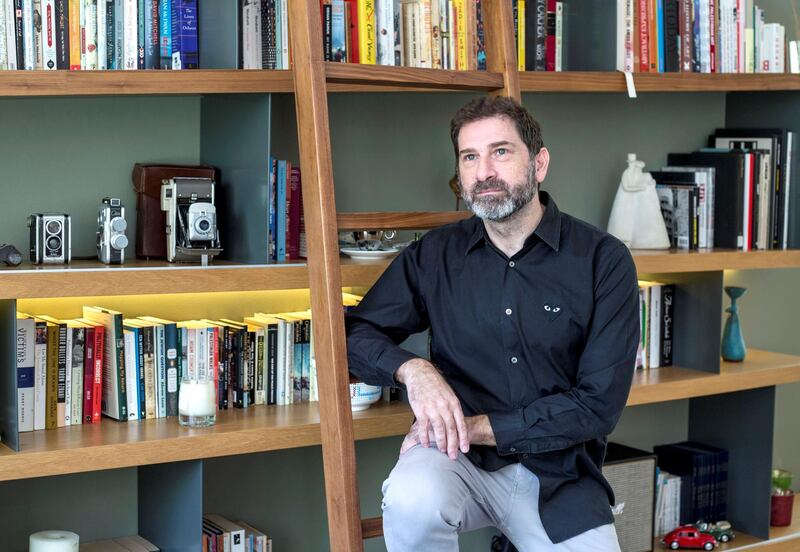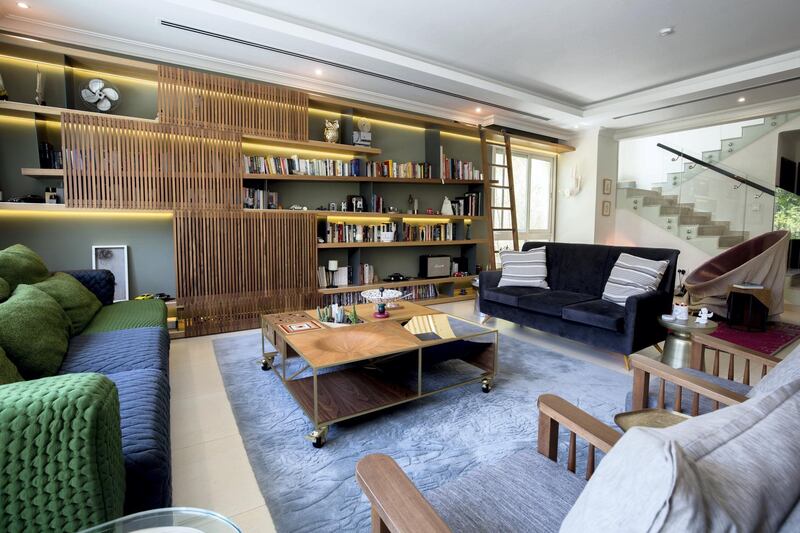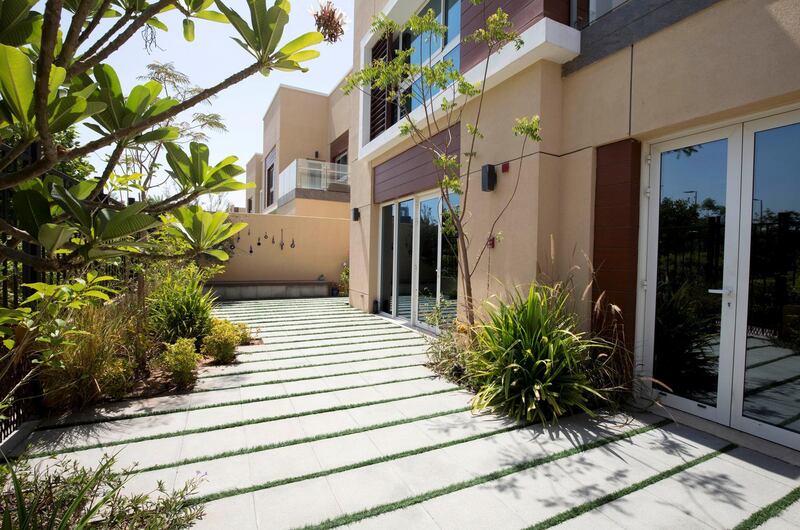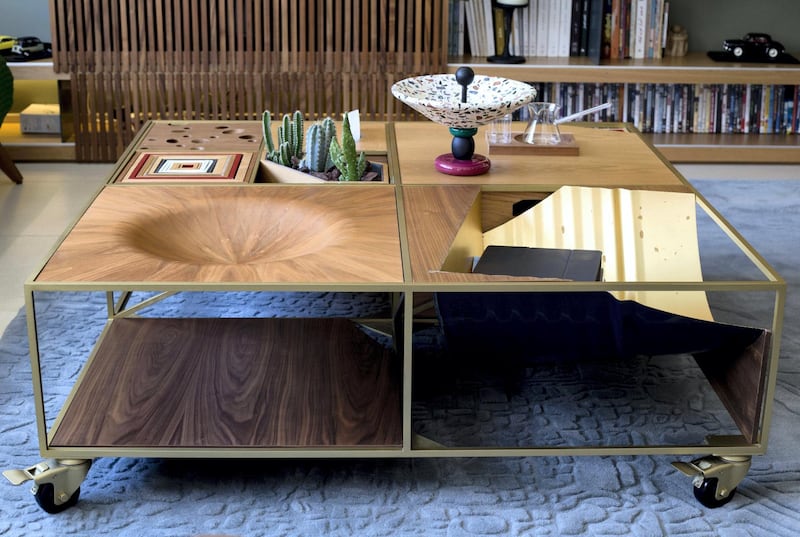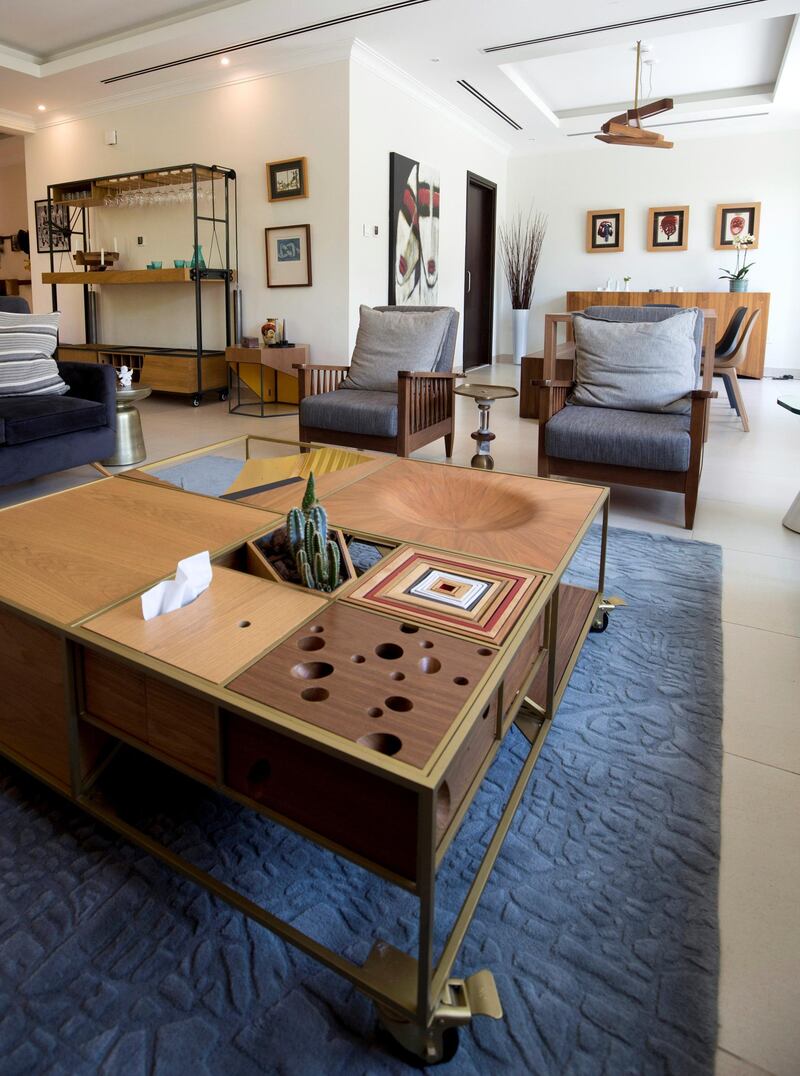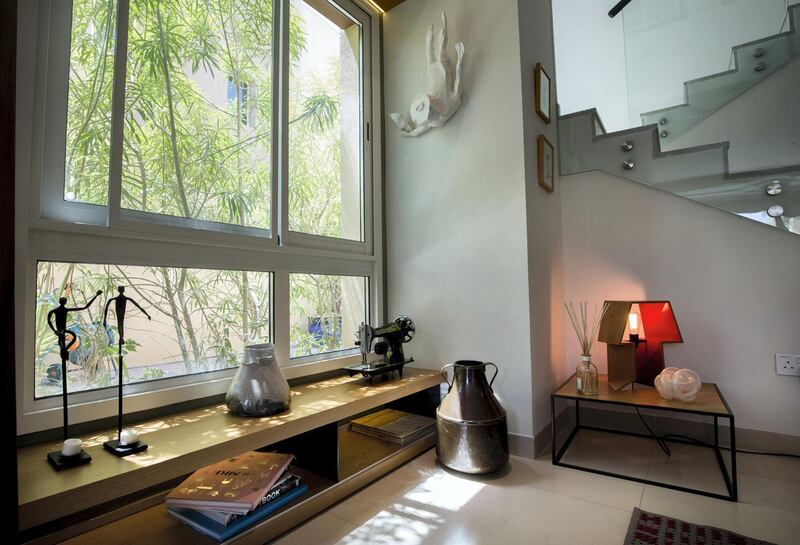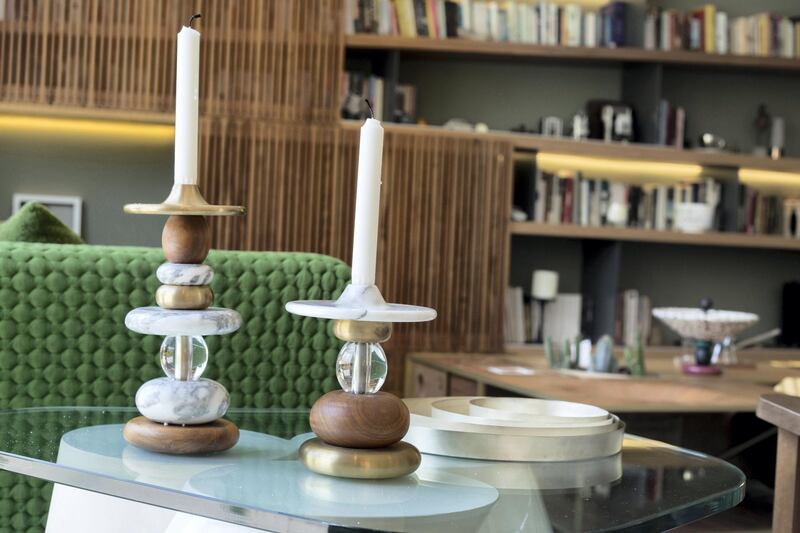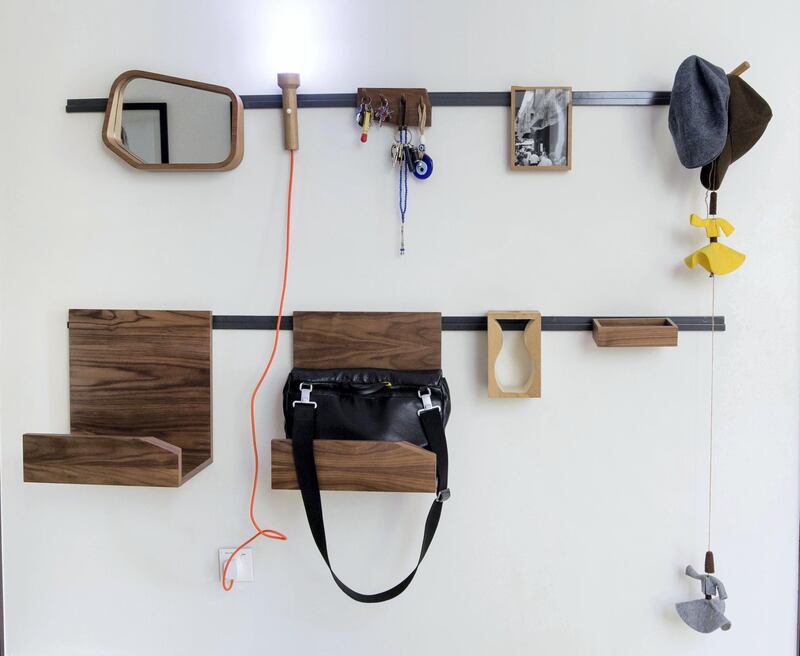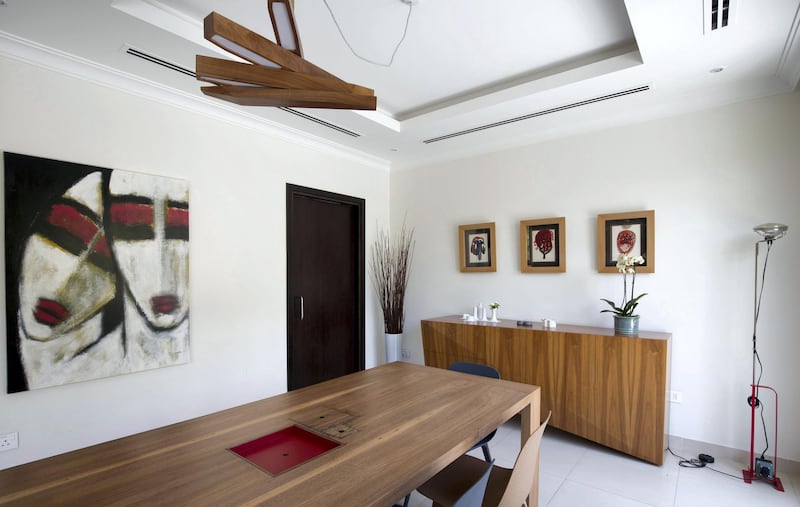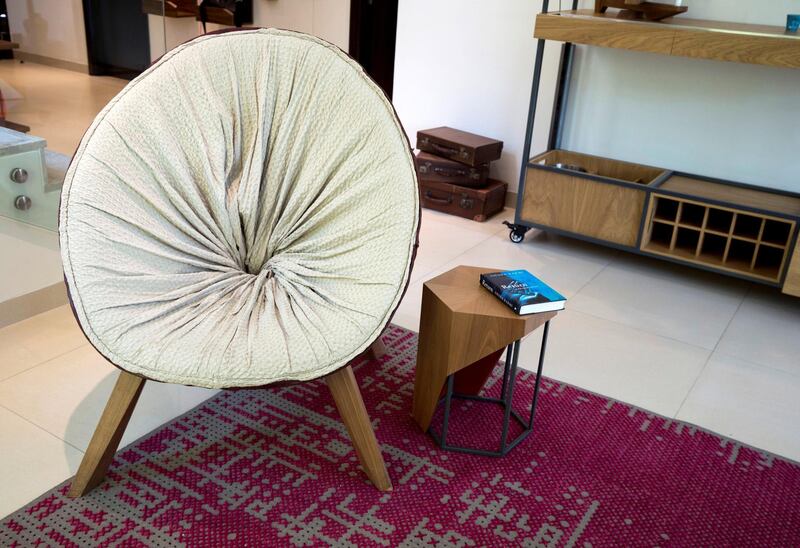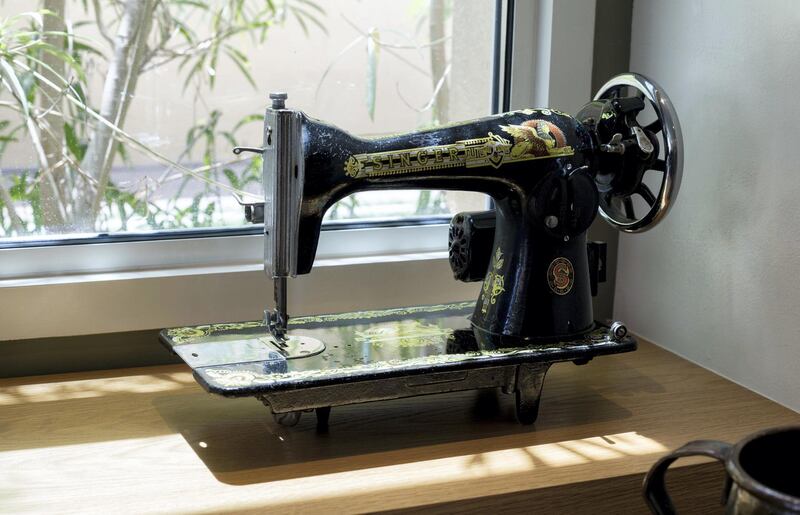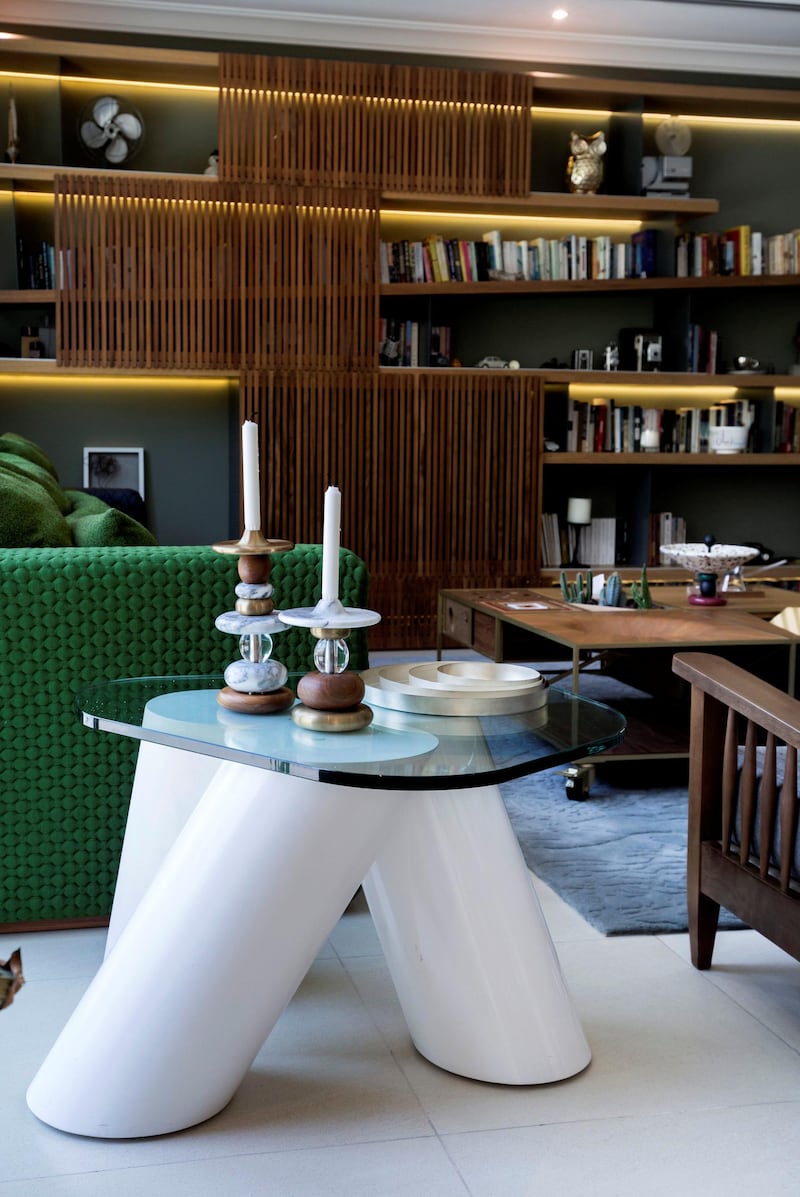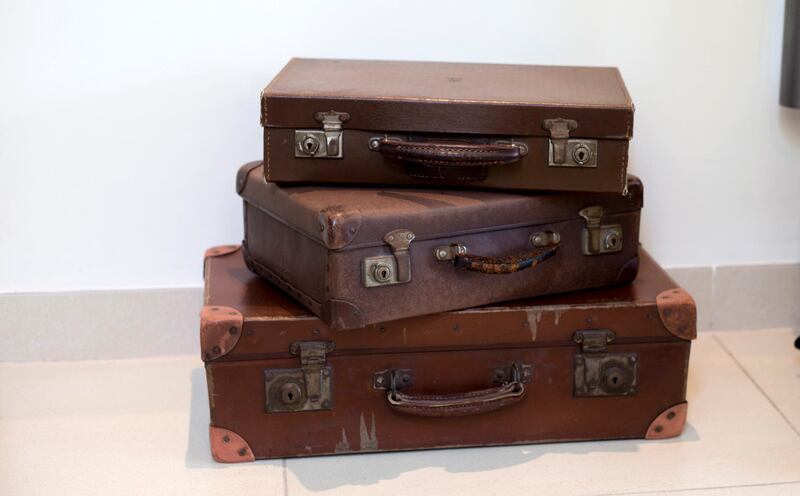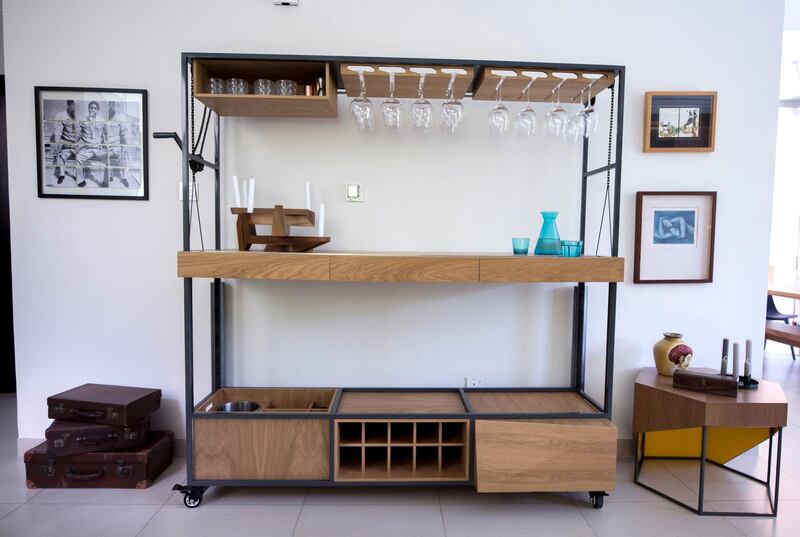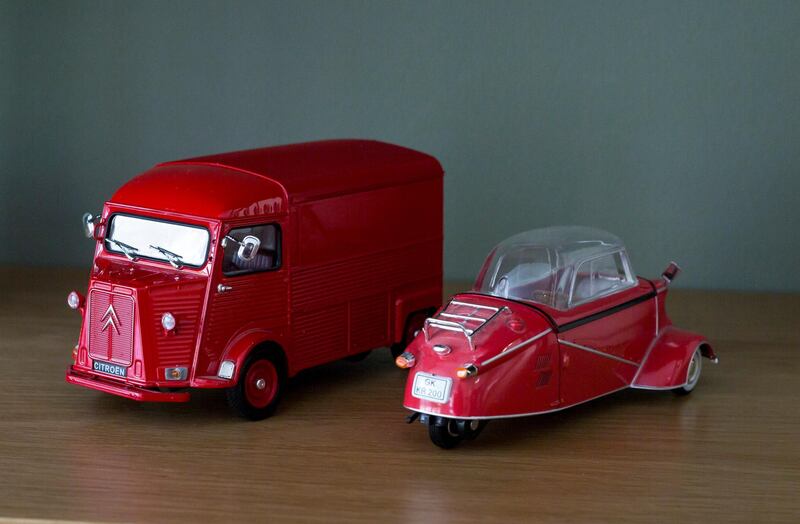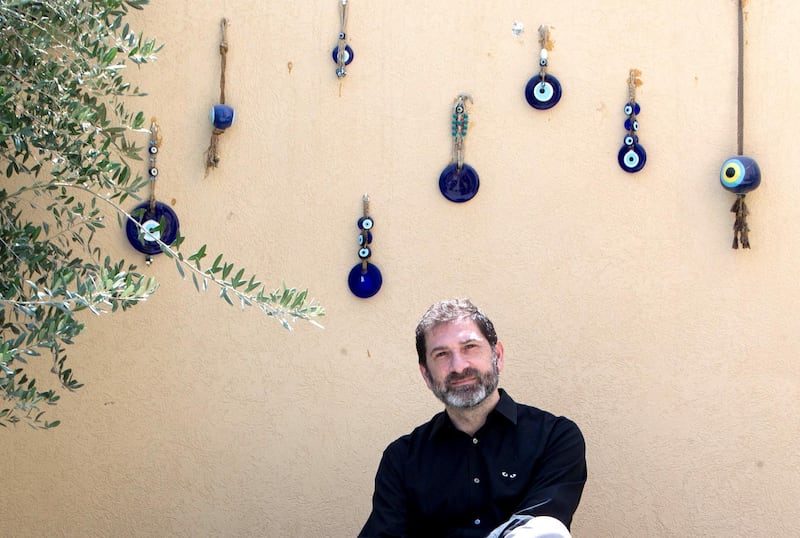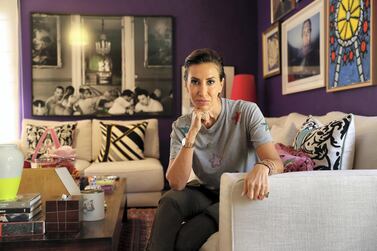Located in Barsha South is Tecom Investment's Villa Lantana, a community of modern minimalist homes. From the kitchen to the patio, these houses ooze contemporary chic. And so it is only fitting that residing in one of the four-bedroom detached villas is Fadi Sarieddine, one of Dubai's acclaimed multidisciplinary designers, with his wife, Lilas Bitar, and two sons, Zayyan and Julan.
Take a look through the photo gallery above to see inside Sarieddine's home.
Sarieddine is best known for his furniture and product design, as well as architectural projects, and he has been a regular at Dubai Design Days and Milan’s Salone Del Mobile. He worked on the Boom and Mellow stores, Aramex offices in both Dubai and Abu Dhabi, and OneLife Kitchen and Cafe at Dubai Design District.
Perhaps unsurprisingly, most of the furniture in his home has been designed by him. In the entrance foyer is his Hang On wall fitting made of steel, walnut and oak veneers, and a mirror, on which he hangs keys, bags and sunglasses. “Basically all the things you need to unload when you enter your home, and take with you when you leave,” he explains, as we enter the house. The credit for this piece actually goes to his wife, who came up with the idea. Bitar, a former teacher, had previously worked at her father’s furniture gallery in Beirut, before co-founding Fadi Sarieddine Design Studio in 2013 with her husband.
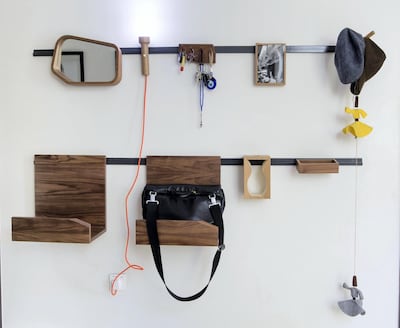
The family’s house has two storeys. Downstairs is home to the living and dining rooms, as well as the kitchen and one guest bedroom. Upstairs, you find three bedrooms and a more informal living area. “It is mainly my parents or my sister who come and stay, so it is practical to have the guest bedroom down, so they do not have to bother with the stairs.”
A large wall unit made of walnut defines the living room. It was, of course, custom-made by Sarieddine. It is functional and sturdy – something the designer believes should be at the core of every piece of furniture – but it is also quirky, with its one sloping shelf.
A sliding wooden panel hides a television, but on full display is Sarieddine's extensive book collection, which includes plenty of tomes on design and many more on politics. This includes titles such as Robert Fisk's The Great War For Civilisation: The Conquest of the Middle East and Bush in Babylon by Tariq Ali. "Politics effect way of life and also inform design," says the trained architect.
This perspective is also reflected in his work. For instance, in the corner of his living space are the Wax and Fire candle stands, from the Dubai edition of his Damascus Revisited series, which were shown during 2016’s Dubai Design Days. They are made of brass, marble, walnut and Plexiglas. “If you look at this region’s design history, it was disturbed due to colonialism,” he explains. “At this time, it became the norm to import European furniture. So I wanted to look back at the time when home-grown furniture was the standard.” For this series, which also included lights and bowls, old Damascene tables inspired him as he deconstructed traditional designs.
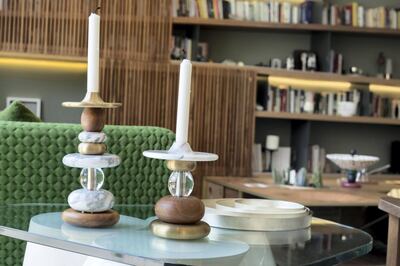
We also spot myriad DVDs on the shelves. “We were tricked into collecting these,” he says with a hint of amusement. “Now they just rest on the shelf. You cannot use them anymore.” They sit near some vintage pieces, too, including a Singer sewing machine that has “Made In The People’s Republic of China” embossed on its top. It was bought from one of his favourite markets, Basta, back in Beirut.
Among his furniture is a vintage sofa and two chairs that he had upholstered in grey. He prefers muted hues, with brighter colours used sparingly, as a surprise element. When you pull out the drawers of his sideboard, for example, you notice the sides are painted red. And there are hints of colour in his modular coffee table, another signature piece from the Fadi Sarieddine Design Studio. It comes with a metal main frame and a series of 25 “plug-ins” you can configure to suit your needs. Sarieddine’s version includes a plant holder and gold-leafed barrel plug-in that creates the perfect space to store magazines and files in.
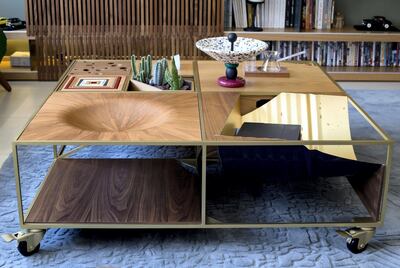
This interchangeable, multi-use design drives all of Sarieddine’s pieces. “Product design is not sculpture, it is something you must be able to use on a daily basis,” he explains. This consideration carries through to the bar and dining table, which are very utilitarian, with an industrial edge.
His house is filled with art, but the work he is most proud of is a white gypsum sculpture he bought just three months ago. It is called the Birdman Sculpture and was made by Syrian-Lebanese artist Semaan Khawam. "I missed my flight back from Beirut as I spent two hours in customs with it. They thought I was hiding something inside it." This artwork can be found near the "reading corner" of the living room, where the Swaddle chair is; a hand-stitched, vegetable-dyed leather seat with a built-in cotton blanket that embraces you as you sit down.
It is hard to keep track of the many striking design pieces around this carefully curated home. We see bowls by Tom Dixon and an uplighter by Flos, some vintage trunks embossed with Queen Elizabeth II's coat of arms that he bought from London's Camden Market, and dining room chairs from Ikea. The upstairs family room features a throw and chair from Zara Home. "I say, if you find something from Zara Home that is tasteful, then go for it." He believes that a person's abode has to have a mix of designer and high street, vintage and new. Even the patio features a mix: there is a custom-made bench near to old, wooden Lebanese furniture teamed with chairs that originally came from Africa.
Undoubtedly, much thought has gone into the decor. “This is our third house since we moved to Dubai in 2004, but I knew as soon I walked into this property two years ago that it was going to be our home for a long time,” he admits. “It had that clean and modern look that just worked with our own design aesthetic.”
Often, that is what it is all about: just walking into a space and knowing that you belong.
